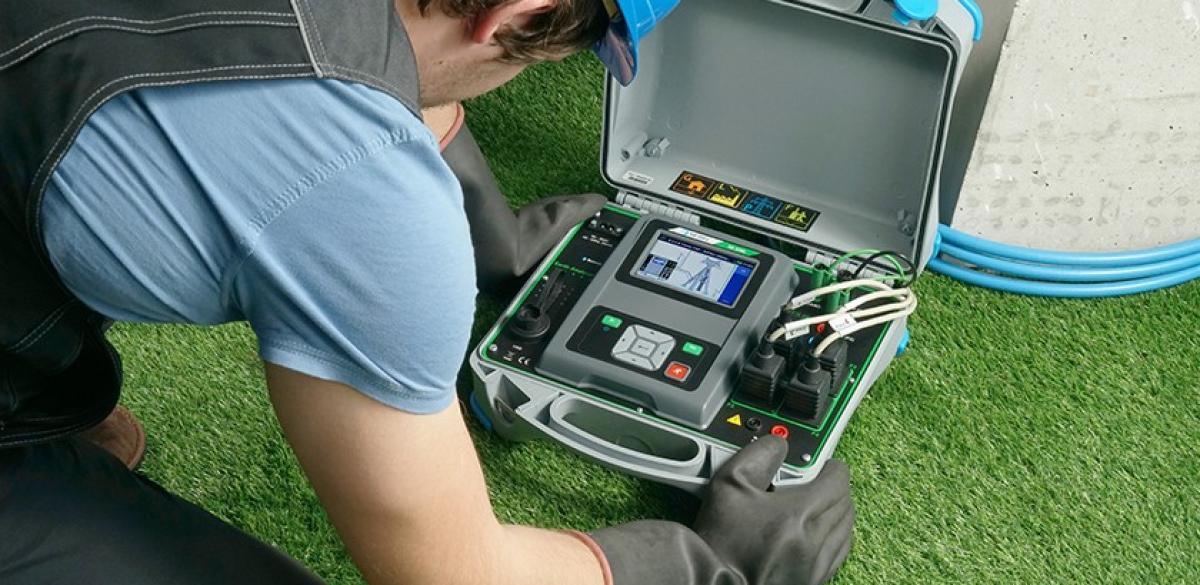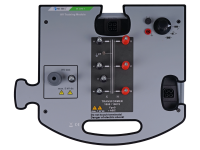Demonstration boards EE
Equipment for Laboratories and Schools

Teaching and training future electrical engineers in the importance of grounding of power grid objects (pylons, transformers, substation components etc.) and complex industrial systems is incomplete without hands-on experience in grounding analysis on location with appropriate equipment. Lack of access to such objects and other factors often preclude this, necessitating the use of didactic simulators that can fit inside a classroom or are, even better, sufficiently small for desktop use.
Metrel offers two such desktop training simulators (modules); one simulating a power grid pylon and the other a power transformer. They can be used standalone or combined to form a miniaturized and simplified simulator of an electric grid with two pylons and two transformers. Both modules have easy to reach terminals for connection to HV test equipment and can simulate a variety of errors with a turn of a dial.
Which is the best for you?
Features*
- Safety first: training with electronic protection circuits monitoring possible dangerous situations.
- Passive elements, power resistors, inductive components and protection circuits inside the boxes lower overcurrents and overvoltages down to a safe level.
- Simulation of good or bad conditions: pass and fail barriers settings on all decision making parameters.
- Simulation of semi-conductive floor to learn the correct tracing of voltage funnel, step, touch and contact voltages calculation for different situations and errors on systems.
- Ideal tools for training inspectors, maintainers, installers or any other decision makers.
- Train through exercises on predesigned evaluation of safety at test points, custom limits and tested results combined together and evaluated simply as PASS / FAIL.
- Modules are supported with handbooks, posters, charts, presentations, exercises, catalogues of knowledge and catalogues of exams plus approved certificates (optionally when separate training module is localized).
- Demonstration equipment for electrical energetic safety & quality.
- Earth/ground network impedance analysis.
- Ground network impedance measurement.
- Earth surface potentials.
- Simulation of faulty step & contact voltage.
- Pylon selective legs.
- HF earth impedance measurement.
- 3-pole measuring method, 4-pole measuring method.
- S-flex measuring method by using one or more flex clamps.
- Support for HF measuring method.
- Support for impulse measuring method.
- GPR measurement.
- Step and contact voltage measurement.
- Pylon ground wire (PGW) testing.
- Simulation of broken connection pylon foot resistance.
- Pylon grounding ring simulation for GPR measurements.
- Simulation of a ground wire connection.
- Simulation of different earthing types.
- Analysis of insulating material.
- Cable impedance, resistance and insulation.
- HV insulation analysis.
- Transformer resistance measurement.
- Winding resistance measurement.
- Transformer turn ratio analysis.
- Insulation measurement.
- Insulation resistance testing (spot test).
- Diagnostic testing (DAR, PI, DD).
- Step voltage testing.
- Transformer analysis.
- Different measuring procedures can be demonstrated/trained under various simulated errors.
- Simulation of broken windings (short-circuit faults on windings).
*Note: Presented features, functionalities and other information on this page represent a compound list of all products’ capabilities and not capabilities of each separate product. Consult datasheets and user manuals of each specific product for detailed information about supported features and functionalities.
Applications*
- Training centres.
- Education, trainings and seminars.
- Education and practical training of electrical contractors about safety procedures and measuring methods.
- Demonstration on how to use different measurement instruments and testers.
- Safety testing of industrial energetic installations.
- Safety of installations above 1.
- Safety of substations and transformers.
- Safety of railways systems.
- Testing of TT, TN and IT systems.
- Long distance transmission systems and pylons safety and predictive maintenance.
- Initial and periodic testing and inspections of energetic and industrial installations.
- Electrical safety in work locations.
- Electrical safety in public areas.
- Fire safety and hazards, troubleshooting of overloaded electrical systems, hot wiring or connections, failed components.
- Maintenance (energetic installations maintenance, preventive and predictive maintenance, corrective maintenance / reactive repairs).
- Lightning installations.
- Construction sites.
*Note: Presented features, functionalities and other information on this page represent a compound list of all products’ capabilities and not capabilities of each separate product. Consult datasheets and user manuals of each specific product for detailed information about supported features and functionalities.




